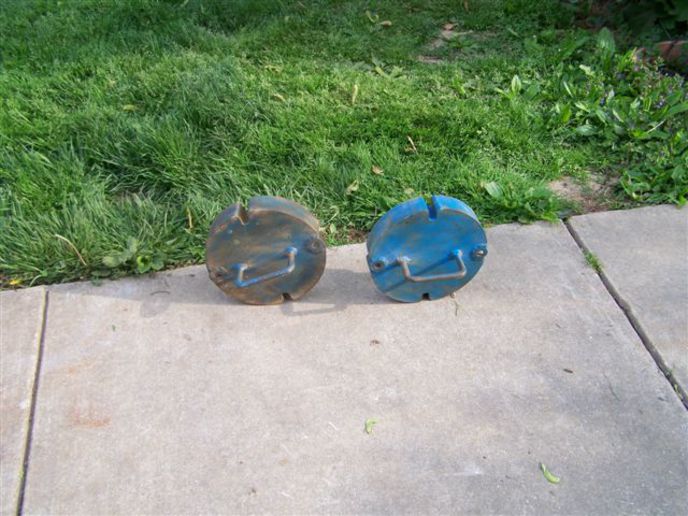WeirdDeere
Member
I have a small project aluminum box that I am going to prime with PPG Omni products...the MP176 Acid Etch and the MP171 Epoxy primer.
I'm going to have plenty left over, and if all goes well I plan to keep using these primers in the future. I'd like to know more about using them.
The aluminum is being cleaned/scuffed and should be primed in a few days time, I think the sitting a bit shouldn't hurt it?
And onto my usual projects...cast iron or steel. I'm assuming that if I sandblast that the epoxy would be plenty enough protection for the clean metal. On lots of small bits I might end up using a wire wheel on a angle grinder to clean up the metal, removing all the rust that I can, though I know there still might be some in pores or small places...would the acid etch primer do well to stop this rust as long as it's covered with epoxy afterward?
I've always just been a bit confused if acid etch needs to be used on absolutely clean metal or if it's good to use on "slightly" rusty metal, for lack of a better term. I definitely don't mean flaky thick rust or something, just any small bits that might be missed. How does it react to any paint that might be left on a surface?
Thanks,
Brandon
I'm going to have plenty left over, and if all goes well I plan to keep using these primers in the future. I'd like to know more about using them.
The aluminum is being cleaned/scuffed and should be primed in a few days time, I think the sitting a bit shouldn't hurt it?
And onto my usual projects...cast iron or steel. I'm assuming that if I sandblast that the epoxy would be plenty enough protection for the clean metal. On lots of small bits I might end up using a wire wheel on a angle grinder to clean up the metal, removing all the rust that I can, though I know there still might be some in pores or small places...would the acid etch primer do well to stop this rust as long as it's covered with epoxy afterward?
I've always just been a bit confused if acid etch needs to be used on absolutely clean metal or if it's good to use on "slightly" rusty metal, for lack of a better term. I definitely don't mean flaky thick rust or something, just any small bits that might be missed. How does it react to any paint that might be left on a surface?
Thanks,
Brandon


